The Araceae family includes many fascinating houseplants, and Alocasia Cucullata is one of them exhibiting radiant, tropical foliage. It is a dazzling and evergreen beauty with a compact growth habit, making it suitable for smaller places to create a harmonious environment. This gracious foliage plant not only lightens up your space but is believed to attract fortune wherever it is placed. This plant features glossy, bright green heart-shaped leaves and an elegant tall stems. According to plant experts, the green foliage of Chinese Taro creates a sensation of peace and tranquillity in your home. It is a beautiful ornamental plant that can enrich the environment of your home with its presence.
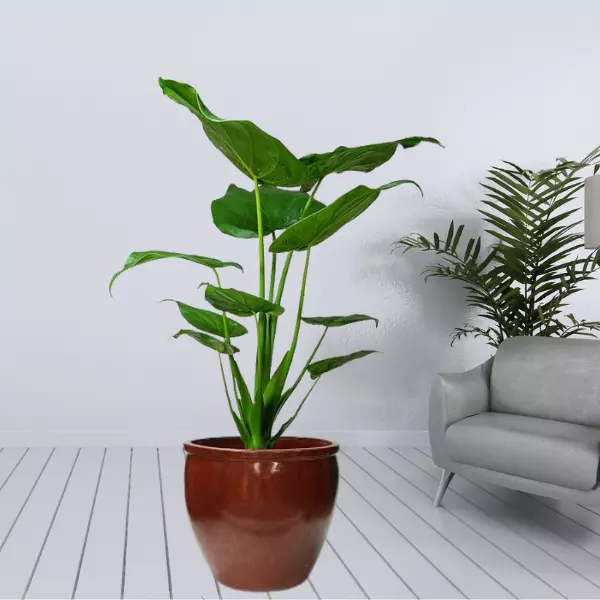
Allied Species: Alocasia Macrorrhiza Variegata, Alocasia Sarian, Alocasia Pink Dragon, Alocasia Lauterbachiana, Alocasia Silver Dragon, Alocasia Stingray, Alocasia Regal Shields, Alocasia Nebula, Alocasia Maharani, Alocasia Jacklyn , Alocasia Cuprea, Alocasia Black Velvet , Alocasia Macrorrhiza.
Related Products
Products | Name | Check Price |
Organic Perlite for Plants | ||
WONDER SOIL Organic | ||
Orchid Potting Bark Mulch |
Habitat & Ecology
Chinese taro is native to Southeast Asia and grown in different areas in India, Thailand, China and Burma. Alocasia Cucullata is also famous with other names such as, Buddha’s hand, Chinese Ape, Chinese Taro, and Hooded Dwarf Elephant ear. Although it originated from Southeast Asia, this perennial plant is available worldwide now.
| Botanical Name: | Alocasia Cucullata |
| Family Name: | Araceae |
| Common names: | Chinese Taro, Hooded Dwarf Elephant ear, Buddha’s hand |
| Origin | Southeast Asia, Thailand and Laos |
| Height | 4–6 feet |
| Temperature | 65F-75F |
| Humidity | 65% to 80% |
| Light Need | Bright dappled sunlight |
| Soil Type | Moist but well-draining |
| Planting Time | Spring / Summer |
| Flower Inflorescence | White or green spathe and Spadix |
| Propagation | Basal Offset Division, stem or tuber cutting |
| Pest and diseases | Spider mites and root rot |
Growth
Although Alocasia Cucullata it is a Taro but it does grow as tall as Alocasia Macrorrhiza and the foliage is smaller compared to other giant Elephant Ear plants. The Chinese Taro or Hooded Dwarf Elephant ear can grow approximately 6 feet tall and as the names suggests it is dwarf Elephant Ear; hence, compact size. In optimal conditions Alocasia Cucullata is a fast growing plant and quite often you would see plant grown in multi-stemmed fashion (side shoot emerging from main stem).
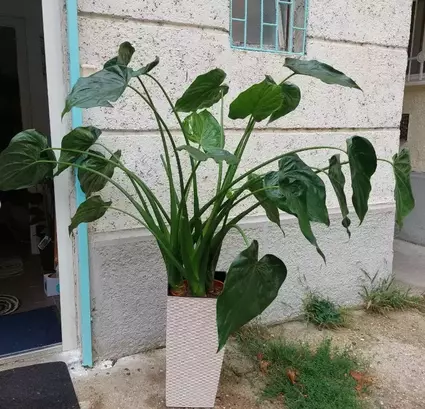
Plant growth is active during Spring and Summer but it goes to dormancy during winter. Hence, plant experts advise lessening the watering frequency in winter and also halting fertilizing the plant as there is no growth in that season.
How do you care for Alocasia Cucullata?
Alocasia Cucullata is a long-lasting plant if it receives the right care and attention. It’s easy to grow and maintain. As its native to tropical rainforests, it desires for same conditions at your home and the good news is that you can easily create a such environment at home to keep it happy.
If this plant has suitable humidity levels, warmth, well-draining and aerated soil, it can keep your home cheerful for years. Keep reading the article to learn about the complete care guide for this attractive plant.

Initial Care at Home
Due to its unmatched appeal, Alocasia Cucullata is a great addition to your indoor plant collection. This adorable plant needs proper care and attention to flourish. Therefore, make sure you provide an accurate environment for its growth and nourishment.
When you first bring the Chinese Taro home, firstly, place it in a bright space where it gets indirect sunlight. Also, schedule a watering routine for your subtle plant. Check the soil and ensure that it’s well-draining and aerated.
We suggest quarantining your new plant it from other plants at home. The reason for isolation is to inspect for any pests or diseases, and it shouldn’t spread among other plants in your collection.
The best practice is to shower your new plant to remove any pests or dirt. Also, remember not to repot the plant immediately; give it time to adjust to the new environment. If you repot the plant instantly, it will go into stress which can affect its growth.
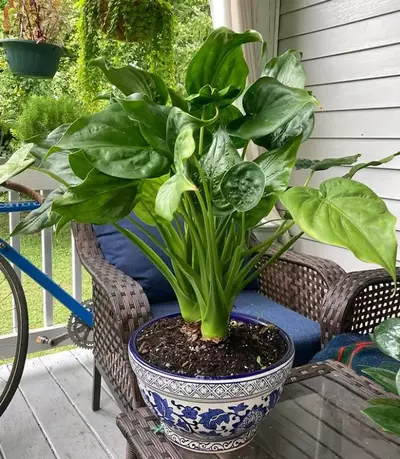

How often do you Water Alocasia Cucullata?
Like all other Alocasias, Cucullata also likes moist soil, but it shouldn’t be excessively wet. Allow the top third of the soil to dry out before watering. Always check the soil moisture before watering as overwatering may also put the plant at risk of root rot and other fungal infections. When you water let the excess water drains through drainage holes to avoid water logging; hence, preventing the root rot.
Also, water evenly so that all parts of the plants receive an equal amount of water. Please don’t let the soil dries completely between watering as it can cause drooping and yellowing of leaves.
The little droplets on the tips of Cucullata’s leaves (guttation) are signs of overwatering. When there is a surplus of water in the soil, the plant releases excessive water through droplets.
Make sure to wipe up these drops with the help of a cloth, as they may cause irritation if they come in contact with humans or pets. When you notice the signs of overwatering, reduce the frequency. It is always a good practice to use a moisture meter or moisture sensor to monitor the soil dryness.

Do Alocasia need lots of sun?
Being a tropical plant, Cucullata prefers bright light conditions all year round. Harsh winters are not suitable for the growth of this plant, and if it doesn’t get the right atmosphere, it doesn’t blossom. As the plant is intolerant to harsh weather, most people keep it indoors as a houseplant when the temperature drops during winter..
The Budha palm prefers bright light but can’t endure direct sunlight for long hours at a time as it may scorch the leaves. It’s because of its natural habitat where trees and larger plants block the direct sun rays for it.
As such, this plant is very happy in indirect, bright and filtered light. The ideal spot for your Chinese Taro is a north or east facing window where it can receive some morning sun rays.
The plant is best suited for indoors but if you want to keep it outdoors, make sure to provide a partial shade and keep it away from the harsh afternoon sun, especially during summers. Too much sun exposure can cause serious damage to its leaves and change their colour.
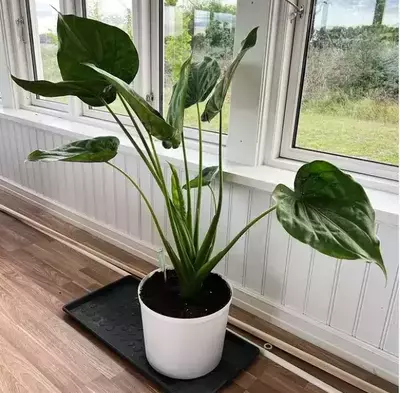
Similarly, Alocasia Cucullata will not thrive in low-light circumstances. Its glossy, exquisite leaves may turn yellow in shady spots. Additionally, it will slow down its growth and raise the possibility of root rot as the plant won’t be able to photosynthesize effectively. You can also install grow lights to provide an even distribution of light for your plant if you have shady spots.

Humidity and Temperature
Alocasia Cucullata enjoys humid conditions and prefers more than 60% humidity levels. And when the humidity is between 65% to 80%, it grows best and produces the most vibrant leaves.
Although the Chinese Taro can stand above 90% humidity, we suggest not to keep it in those conditions for an extended period as it may cause fungal spots on the leaves. However most households don’t have these humidity levels, which can cause problems for the plant. Thus, it’s important to increase the humidity levels to keep the plant happy.
Misting is a decent choice to raise the humidity, but if the level drops too low, misting also doesn’t work. Here are a few options that you can try to escalate the humidity at your home.
- Set up a humidifier near the plant.
- Place a pebble tray near the plant container.
- Grouping it with other plants is also a good option.
- Move it to more humid rooms such as the bathroom and kitchen.
Correspondingly, the Southeast Asian origin makes the plant enjoy warm weather conditions. The ideal temperature for Alocasia Cucullata is between 65 to 75 degrees Fahrenheit. In this temperature range, the plant grows at its best. As most households have the required temperature for the plant’s evolution, it’s easy to nurture it indoors.
That being said, don’t keep the plant near frosty windows, heaters and air conditioners as it can’t tolerate temperature fluctuations which can hinder its growth.
The plant needs maximum care and attention in cold weather. Consequently, keep it away from a temperature below 69 degrees Fahrenheit or else the cold will harm the plant badly.

Soil Requirements:
Like its other family members, the Chinese Taro loves loose and well-draining soil. Also, the soil should be aerated so that the roots of the plant don’t sit in the water.
According to the experts, always use a potting mix that promotes aeration and drainage in the soil. A potting medium that you can prepare for your Alocasia Cucullata should have the following ingredients.
Please never use normal garden soil for your Budha palm, as that soil doesn’t have the required nutrients and properties for its growth.
Besides that, you can also choose various potting mixes available in the market such as:
As for as the PH lives are concerned, the Alocasias prefer slightly acidic soil and PH in the range of 5.5 to 6.5, and the same goes for Alocasia Cucullata.

Repotting
The repotting of Alocasia Cucullata is generally carried out in the spring or autumn season, as at this time of the year, the temperature is appropriate for the plant’s growth.
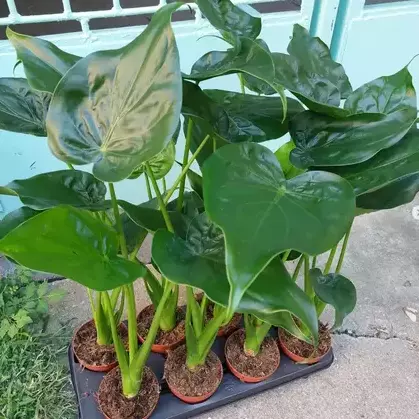
That being said, the Chinese Taro needs to be repotted every 1 or 2 years. Nevertheless, don’t repot it without noticing any signs if you see that the roots are pushing their way out from the drainage holes, its means that the plants wanted to be shifted to a new container.
Pro Tip
If you are planning to repot your plant, it’s a good idea to water it 24 to 48 hours ahead to minimize the transplant shock. Always use a fresh soil mix for the new pot providing all the important nutrients for the plant.
Step-by-step guide for repotting:

Propagation of Alocasia Cucullata
Alocasia Cucullata can be propagated through different methods, but the best-suited technique is propagation through division. The best time to propagate your plant is in spring.
Propagation through Corms
Alocasia Cucullata plants develop corms attached to their roots that can be used to produce new Alocasia plants. You can dig around the potting soil of your Alocasia plant and inspect the roots to find the corms. Gently detached the corms from the main plant. You can root these corms using shallow puddle method. For that, take a small container and fill a little water.
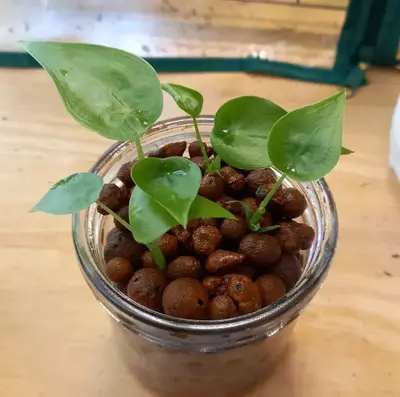
Place the corms into the dish ensuring the corms are not submerged completely. Cove the dish witha lid or plastic wrap to root for a couple of weeks. Once they root you can plant those in potting mix.
Pro Tip: You will be most successful in finding the corms during repotting.
Stem/Tuber Cutting
This method involves cutting the mother plant stem or tuber into smaller segments and growing each segment as an individual plant in new pots. It’s a bit scrappier process because you need to take out the plant from its original container. If you don’t want to take out the plant you can cut the side cutting or stems if the plant has multi stems. These cuttings can easily be propagated in water.
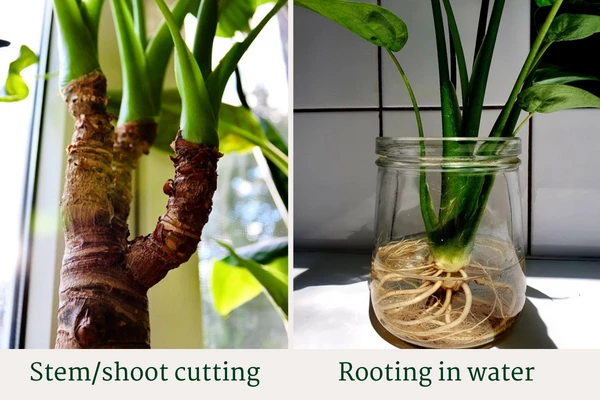
How you can promulgate Alocasia Cucullata?
This is how you propagate the Chinese Taro through the tuber/stem cutting method.
Propagation through Basal Offset Division
Basal offshoots (aka suckers ) division is most common and easy propagation method of Alocasia Cucullata. The basal offsets can be divided from the mother plant and can be rooted to start as new independent plant.
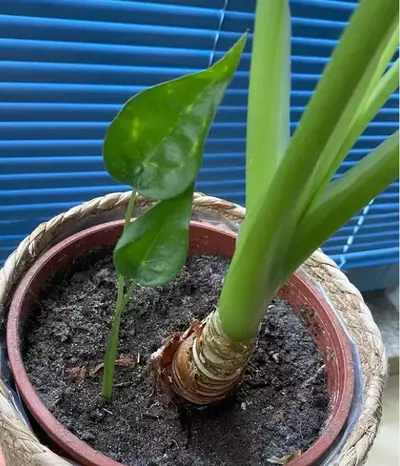

Fertilizer
Proper fertilization improves growth and foliage production, and the best schedule to feed the plant is biweekly. It is also important that you should choose high-quality fertilizer to promote healthy nourishment to the Budha palm. You can feed the plant with a diluted houseplant fertilizer every two weeks during the summer and spring, as these are the active growing seasons. However, ensure to dilute to half-strength when applying.
The best season for composting is spring and summer, and try not to fertilize the plant in the winter months as the plant’s growth stops during this time, and it doesn’t need any additional nutrients.
Pro Tip
Please water the soil before fertilizing your plant to prevent root burn and yellowing of leaves. Because if you apply fertilizer to the dry soil, because of strong chemicals, the concentration will be too high for the plant that can cause burning of roots and foliage.

Maintenance and Pruning
With the growth of Alocasia Cucullata, the old leaves fall off, and new ones grow. When you spot old and yellow leaves on the plant, clip them as they look unpleasant and make the plant unattractive. Also, cut off the stem back to the ground when it becomes tall as the brown skin or scaling on it isn’t aesthetically pleasing. More over you can always propagate that cut stem in water and later plant in a separate pot.
Trimming off the stem and leaves will promote dense, new and energetic growth of the plant. Additionally, when you see your plant is growing too big, trim it using disinfected pruning shears to make it more manageable.
Pruning is also effective when pests and other diseases attack the plant.

Is Alocasia Cucullata poisonous?
All the parts of the alocasia Cucullata are toxic to humans and pets because they contain calcium oxalate crystals, and if it is gulped, it can cause serious irritation to the eyes and skin.
When you ingest the Alocasia Cucullata, you can have a burning sensation on the eyes, mouth and lips. It can also lead to more severe symptoms such as diarrhea, vomiting and drooling. Your eyes may also have pain, redness and swelling.
However, the plant is not fatal, and very rarely do the most serious cases happen, but in most severe scenarios, the swelling can block the air pathways and results in death. Therefore, it’s very important to keep your children and pets away from the plant.
And if the plant is accidentally consumed, immediately wipe out the mouth with a wet cloth and drink milk. Also, quickly contact the doctor. If your pet munches the plant, instantly rush to the vet.

Pests, diseases & common problems
Alocasia Cucullata is vulnerable to different pests attack. The common pests that cause damage to the plant are spider mites.
Spider mites: Spider mites are small pests that can damage your plant completely within one week if they are not controlled and treated at the early stage. To spot these tiny creatures, inspect your plant regularly and if you notice any signs of mites outbreak, immediately start treatment,
The signs of spider mites invasion are yellow spots or webbing of leaves and stems of the plant. After the mites attack, isolate your Alocasia Cucullata from other plants to save them from the bout.
Remove the infected parts and wash off the remaining parts of the Chinese Taro using a garden hose. Then start treating the plant with miticides. Applying miticides every 14 days protects the plant from future invasions. You can also use organic pesticides such as neem oil.
Be sure to follow the instructions while using neem oil. Thoroughly spray the plant regularly and especially target the hidden spots such as the base of leaves.
Other pests: Other than spider mites, mealy bugs, aphids, and scale can also affect your plant. To prevent the plant from the pest attack, it’s essential to spray it regularly with insecticides. As we have mentioned above, neem oil is the best option to treat such conditions.
Common Problems
If you want to preserve your Alocasia Cucullata safe from problems, then provide it with the appropriate environment, watering and feed. The right conditions will keep your plant happy and healthy. At the same time, these measures can reduce the chances of glitches but won’t make it entirely resistant to the issues.
Besides pests and diseases, other problems that a plant can face are humidity, sunlight and watering.
Leaf Curling: If the plant doesn’t receive sufficient humidity, its leaves will start drooping along with other symptoms of low humidity, such as leaf curling and brown edges and tips of the leaves. If you notice these symptoms, look for the humidity levels.
Scorching: If the plant is kept in direct sunlight for long hours, it can cause the burning of leaves. Therefore, always place the plant in indirect but bright light.
Overwatering: It’s the most common issue with Alocasias. In case of overwatering, the plant will get affected by root rot and fungal diseases, and if there is less supply of water, the plant completely dries out.
Diseases
Typical diseases of Alocasia Cucullata are
Root rot: Although this plant entails moist soil but is intolerant to soggy soil and excessive water. The damp soil also obstructs the plant’s progress. Overwatering may cause waterlogged conditions in which there is no proper drainage from the soil mix, and Budha palm may suffer from root rot.
Root rot is a serious condition which can cause the plant’s death. The signs of this disease are yellow leaves and black spots on the stems. If you notice these signs in your delicate plant, remove them from the pot and check the roots thoroughly. Remove the infected parts and repot them in another container with fresh potting mix.
Xanthomonas: If you see dark brown or black spots on the plant leaves that are lined with a yellow edge, the chances are that your plant is affected by Xanthomonas.
This disease is a sign that your plant is destitute of water and needs watering. To treat this issue, water your plant frequently.

Frequently Asked Questions:
Q. How often should you water Alocasia Cucullata?
The best time to water the beloved Cucullata is when above two to three inches of soil are dry. For a plant’s healthy growth, it’s important to mimic its tropical environment and in such a situation, watering once a week is enough. However, the watering needs to change depending on the weather and atmosphere.
Q. Is Alocasia Cucullata an indoor plant?
Alocasia Cucullata is an indoor plant because of its natural habitat. It requires a certain environment, such as 65% to 80% humidity and 65 to 75 degrees Fahrenheit temperature, which can only be provided indoors.
Q. Why is my Alocasia Dying?
There are certain issues that can cause the death of Alocasias. The problems include overwatering, too much sunlight, root bound and lack of appropriate potting mix. If you see your Alocasia dying, look for the issues and start the treatment.
Q. Is Alocasia Cucullata a rare plant?
Alocasia Cucullata is a sort after plant by many plant lovers but is not rare as it is being cultivated widely. Alocasia Cucullata is easy to maintain and grow that will certainly be a good addition to your plant collection. If you want to enhance the ambience of your home, Chinese Taro is the best choice.
Q. Are Alocasias poisonous to touch?
These plants are highly toxic to pets and humans. If touched, it can cause skin irritation. Every part of the plant is poisonous because of calcium oxalate crystals; therefore, always use gloves while pruning, propagating and repotting this plant.

Final Words
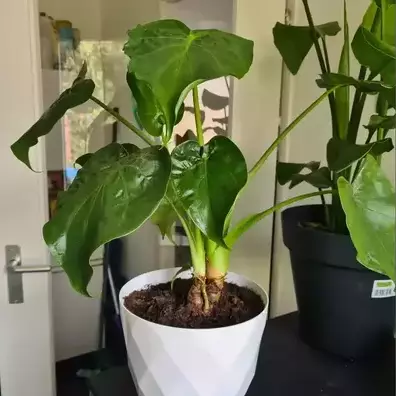
Alocasia Cucullata is a modest yet stylish plant that brings harmony and tranquility to any space where it is placed. Under certain conditions such as stippled light, humidity, warmness and well-draining soil, it flourishes with lush foliage.
Chinese Taro is a lovely houseplant that can enhance any space in the house. Its lush green leaves and subtle tall stems will brighten up your place. The Budha palm is believed to bring fortune to the house. So, why don’t you bring this beauty home and enjoy its benefits?
If you provide the best care to the plant, you can enjoy its presence for years.
Related Posts
Calathea Care Guide
Calathea plant care guide will help you grow them indoors as an ornamental plant because of its stunning foliage patterns.
Maranta Arundinacea Variegata Care Guide
A variant of Arrowroot called Maranta Arundinacea Variegata, with little care produces beautiful foliage and commercially beneficial roots.
Maranta Silver Band Grow and Care Guide
Maranta Leuconeura Silver Band is a darling of native Brazilian forest its broad silver band leave’s pattern makes plant more enchanting.
Best Grow Tent for Quality Grow
We have done close inspections and critical reviews of popular brands to provide you with the right inputs to select the best grow tent for quality grow.
Maranta Kerchoveana Prayer Plant Care Guide
With little care Maranata Leuconeura Kerchoveana or Green Stripe Prayer Plant displays stunning mint color foliage with dark green spots.

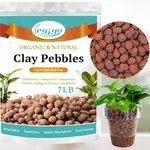
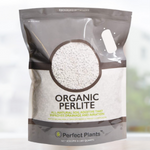

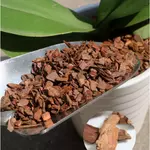


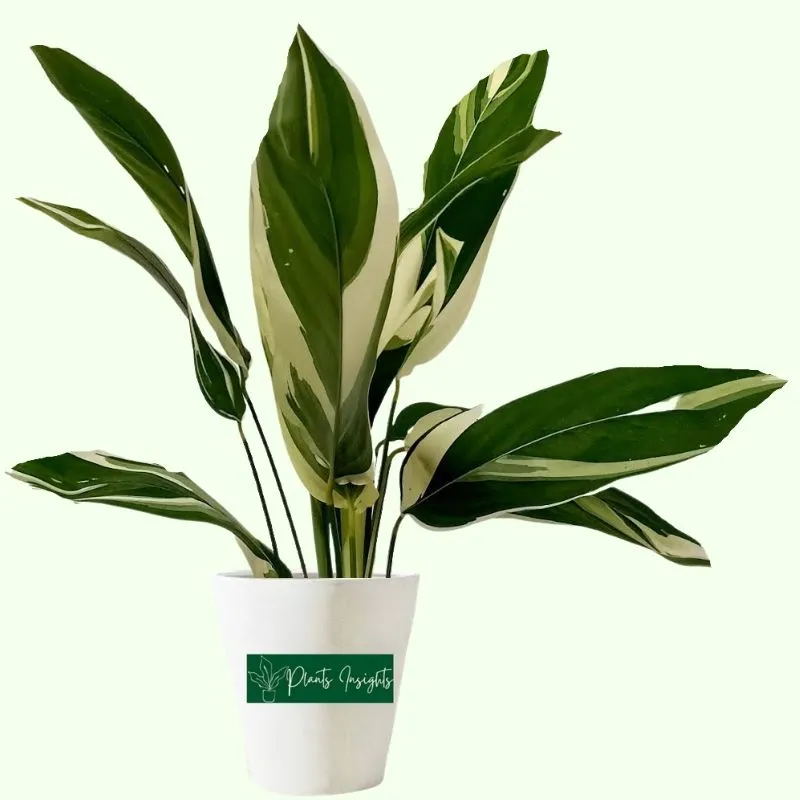


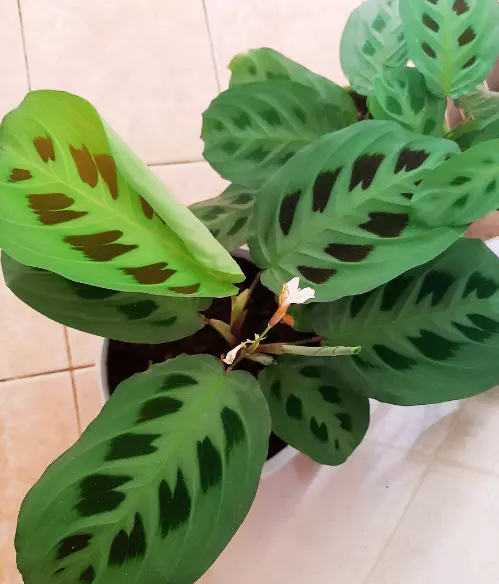
I’d have to examine with you here. Which is not one thing I usually do! I take pleasure in reading a post that may make folks think. Additionally, thanks for permitting me to comment!